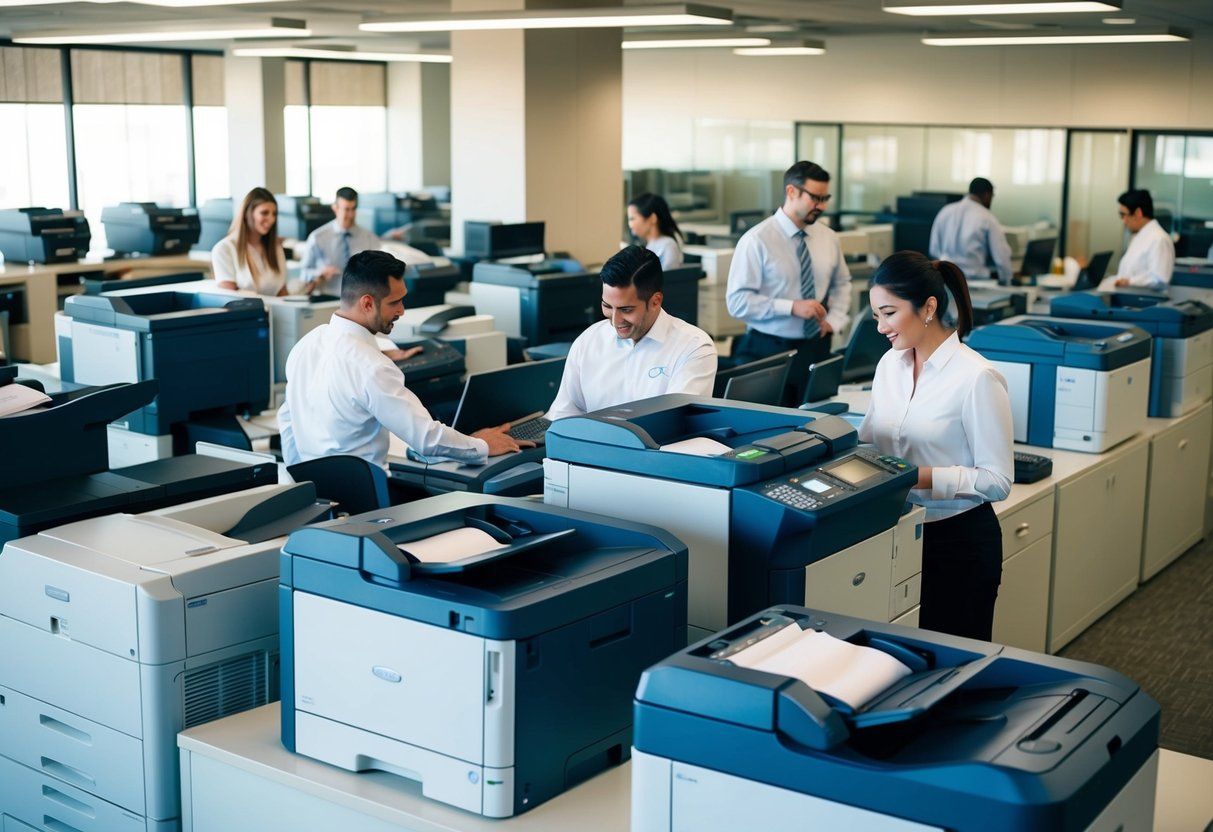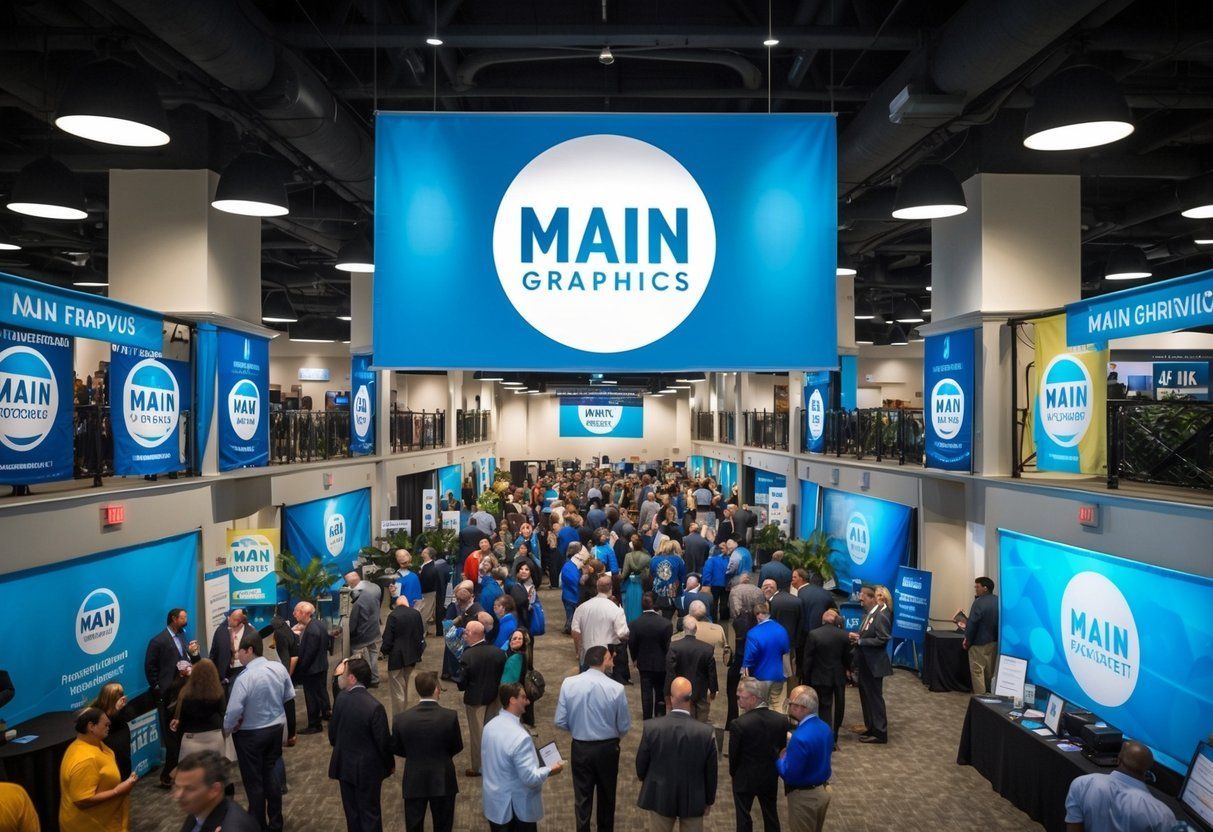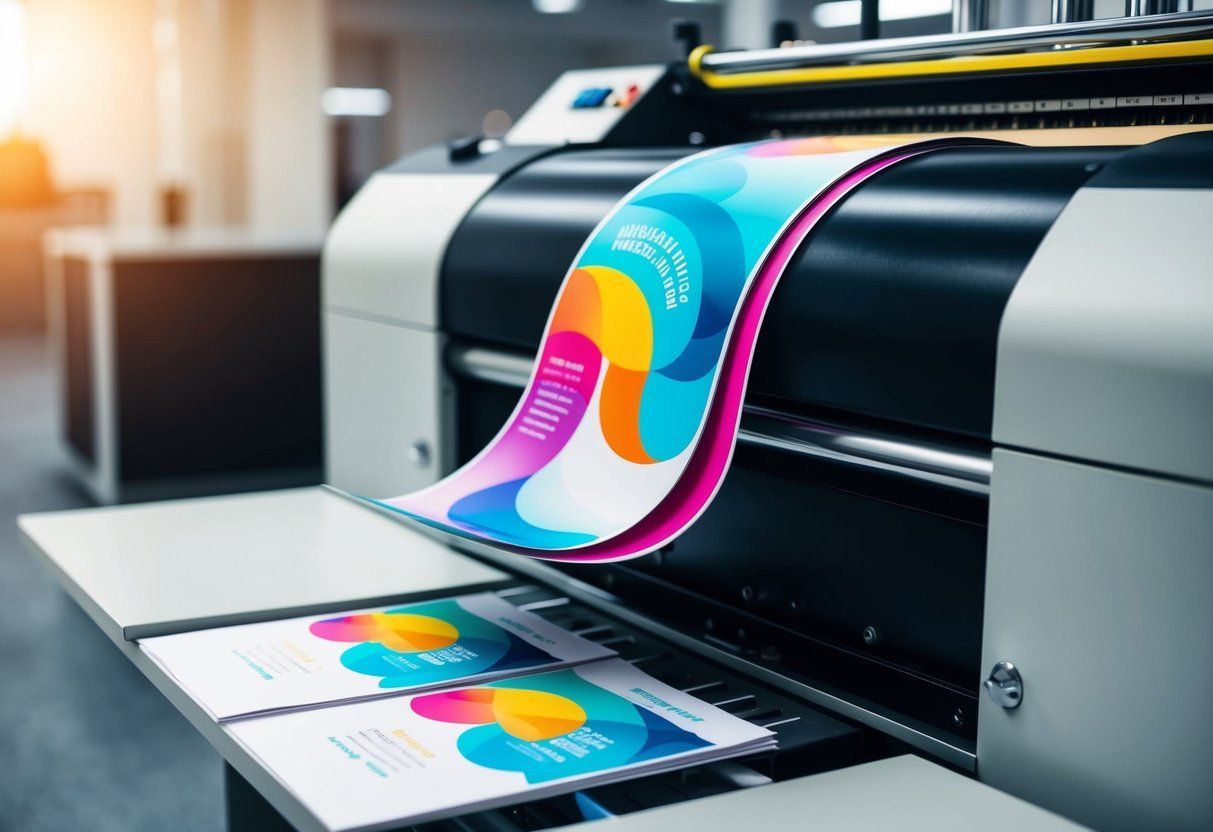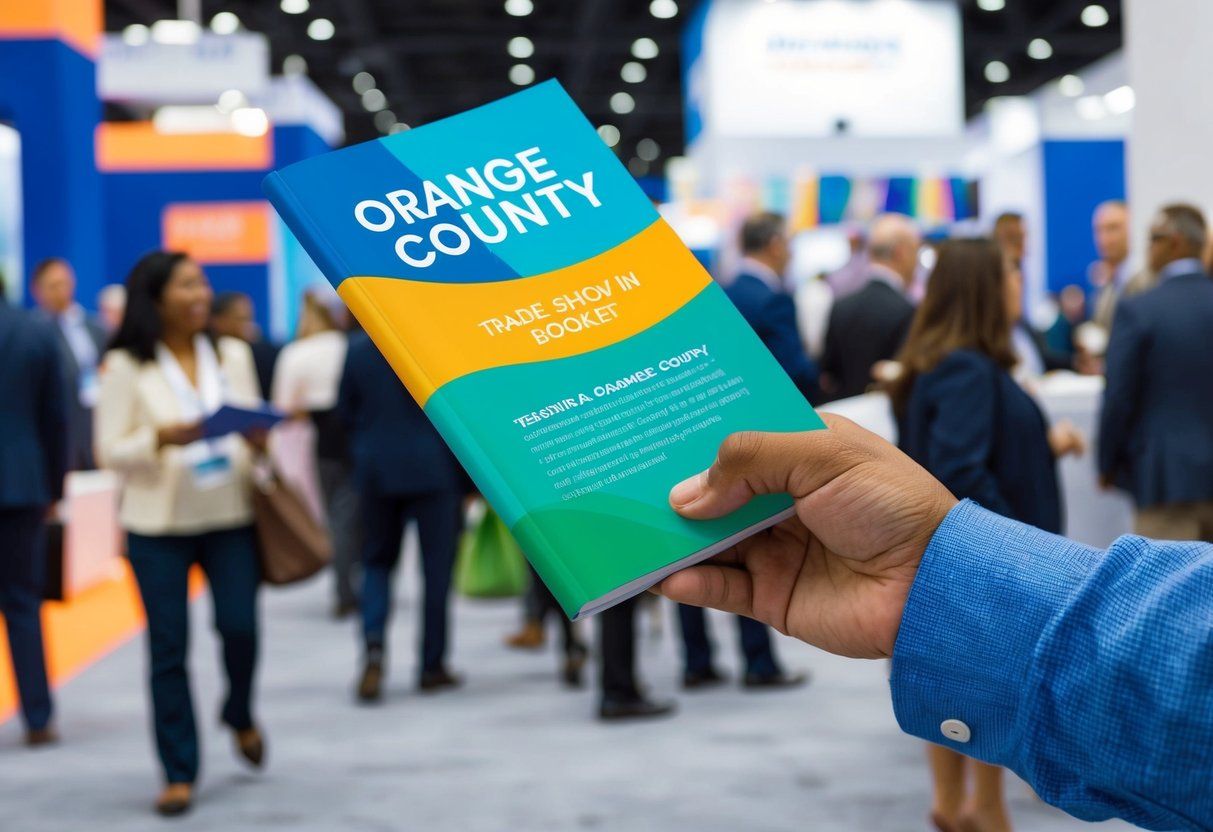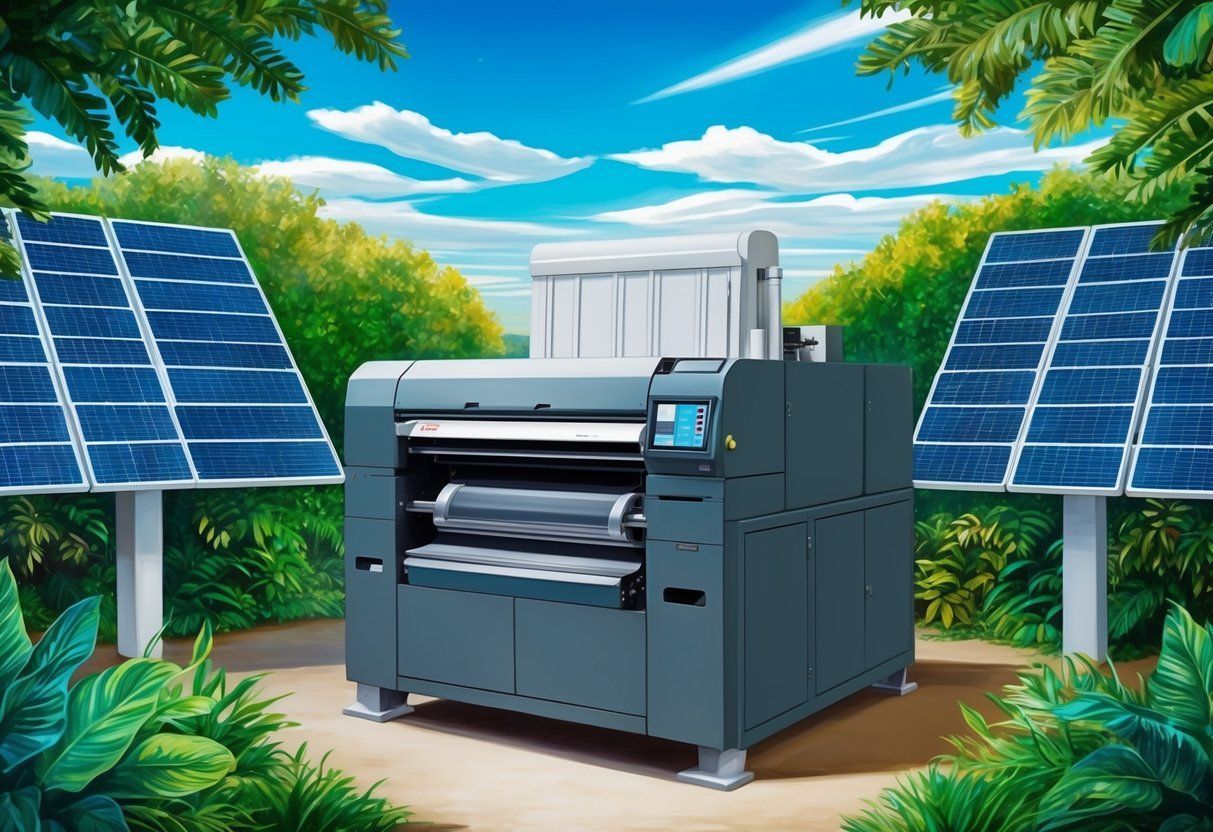How Custom Packaging Printing Can Transform Your Brand: Elevate Visibility and Perception
Custom packaging printing offers a powerful way for businesses to stand out in a crowded market. It can turn ordinary products into memorable experiences, helping brands connect with their customers on a deeper level.
From the moment someone receives a package, the look and feel of the packaging can make a lasting impression.
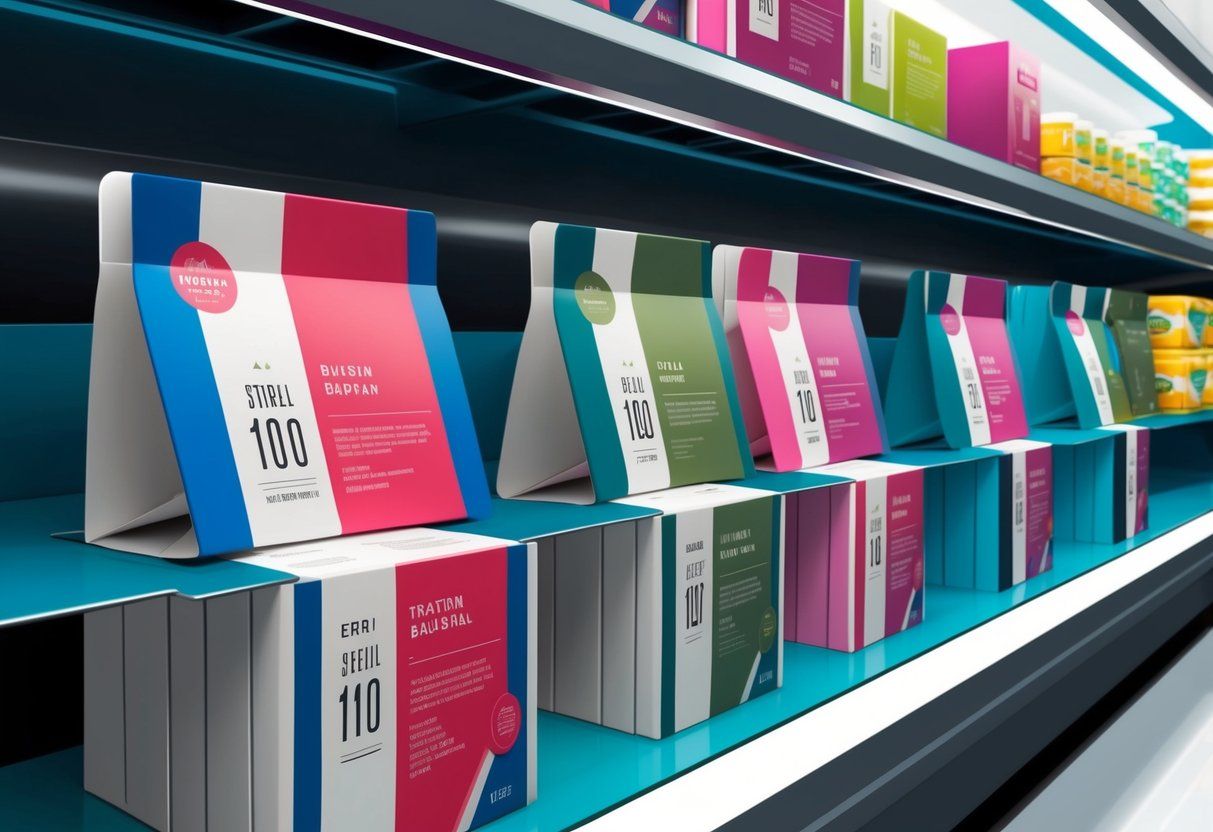
Brands can use custom packaging to express their unique identity and tell their story. Whether it’s through colors, logos, or design elements, these details can enhance the perception of quality and value.
It’s crucial for engaging customers and encouraging repeat business.
Sustainability is becoming a priority in packaging choices. Companies are now leveraging eco-friendly materials to meet consumer demands, while still ensuring their packaging is functional and cost-effective.
Custom packaging allows flexibility to align with these goals, ensuring the brand stays ahead in the industry.
Key Takeaways
- Custom packaging enhances brand identity.
- Thoughtful design boosts customer retention.
- Sustainable options meet modern demands.
The Importance of Brand Identity in Packaging
Brand identity is crucial in packaging because it establishes connection, perception, and loyalty. Effective packaging reflects brand values and enhances brand recognition . It also shapes consumer perception and builds trust.
When done well, it can foster long-term loyalty among customers.
Establishing Brand Recognition
Custom packaging that reflects a brand’s unique identity can make products stand out. It helps consumers easily identify the brand among competitors.
Consistent use of logos, colors, and typography on packaging boosts brand recognition . Simple elements like a logo or specific color scheme can make a product memorable.
Having a recognizable brand identity is essential for keeping customers engaged. When packaging consistently shows brand elements, consumers are more likely to remember the brand. This consistency across products strengthens the overall brand image.
Brand elements used effectively can act as a visual storyteller, conveying the brand’s message and values.
Influencing Customer Perception
The way a product is packaged plays a key role in shaping consumer perception . Packaging that aligns with brand values can create a positive experience, influencing how consumers feel about the brand.
Using materials, design, and messaging that reflect the brand’s image helps build customer trust.
When customers see packaging that reflects quality and care, it impacts their perception positively. Brand storytelling through design and text on packaging conveys meaningful aspects of the brand, such as sustainability, luxury, or innovation.
This thoughtful communication meets customer expectations and enhances the customer experience .
Strengthening Brand Loyalty
Brand loyalty grows when customers feel connected to a brand, often influenced by packaging. Consistency in packaging fosters familiarity and trust, key components in building brand loyalty .
This encourages repeat purchases and positive word-of-mouth recommendations.
When the packaging conveys positive emotions or a value that resonates with consumers, it strengthens their connection to the brand.
Engaging packaging that tells a brand’s story can foster a sense of belonging and loyalty.
Consumers are more likely to stick with brands that consistently deliver a satisfying experience through their packaging and communication.
Designing a Memorable Unboxing Experience
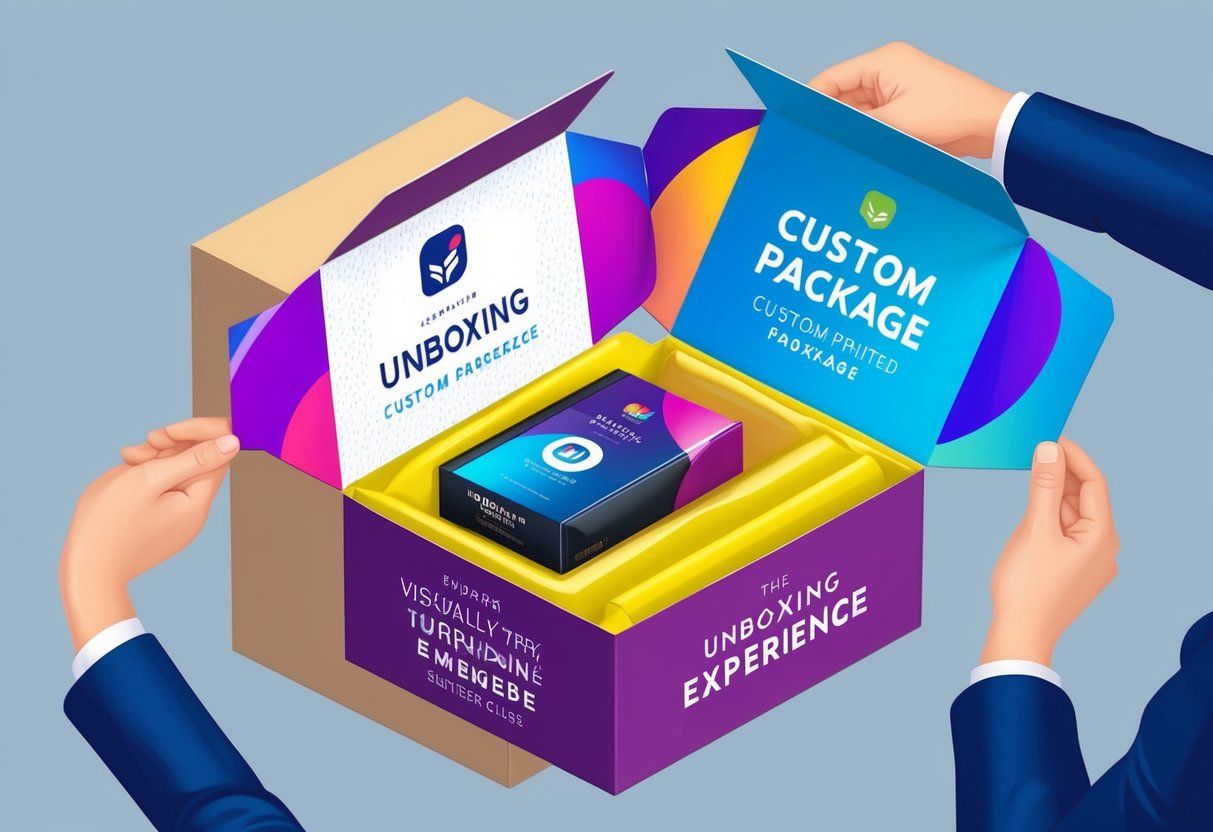
An unboxing experience can leave a lasting impression on consumers. Creating packaging that is unique and tells a story can enhance brand recognition and connection.
Role of Unique Packaging
Unique packaging plays a pivotal role in how customers perceive a brand. It goes beyond the traditional box, standing out with creative designs. Materials like custom tissue paper, embossed logos, or vivid prints can excite customers.
A thoughtfully designed package makes a brand memorable. It visually communicates the brand’s personality and values. Consistent colors, shapes, and designs set a brand apart and give it a distinct identity in a crowded market.
Storytelling Through Design
The design of the packaging can tell a powerful story. Elements like colors, fonts, and graphics can represent the brand’s history or mission.
For example, eco-friendly packaging might highlight a brand’s commitment to the environment.
Symbols and images can evoke specific emotions or memories, creating a deeper connection with the consumer. This contributes to a meaningful unboxing experience, drawing consumers into the brand’s narrative.
Enhancing the Consumer Experience
Enhancing the consumer experience is key to successful branding.
Every detail, like the texture of the box or the sound it makes when opened, can affect this experience.
The right combination of these elements can transform a simple package into an exciting journey.
Including small touches such as thank you notes or surprise samples can delight the customer. These additions not only provide a pleasant unboxing experience but also encourage customers to share their experience, further promoting the brand.
The Connection Between Packaging and Customer Retention
Packaging plays a crucial role in how customers perceive and remember a brand. It not only protects the product but also influences customer loyalty, making it an effective marketing tool.
Packaging as a Marketing Tool
Packaging serves as a direct marketing tool that communicates the brand’s values and identity. Eye-catching designs and informative text can attract potential customers.
For example, unique colors or creative typography can reflect a brand’s personality, helping it stand out on crowded shelves.
Brands often use packaging to convey their story or share details about product benefits. Clear and engaging packaging can enhance word-of-mouth marketing, as people are likely to talk about and recommend visually appealing products.
Thus, packaging becomes a silent salesperson, boosting customer retention.
Packaging Solutions that Foster Customer Loyalty
Brands that invest in innovative packaging solutions often see increased customer loyalty. Packaging that is easy to open, reusable, or recyclable can create a positive experience, making customers more likely to return.
Personalized packaging, like adding a customer’s name or a thank you note, can make the product feel special. This personal touch helps strengthen the connection between the brand and the customer, fostering loyalty.
A well-packaged product encourages repeat purchases, contributing to long-term customer relationships.
The Impact of First Impressions
First impressions are critical, and packaging is often the first physical interaction a customer has with a product. A sleek, high-quality package can create an instant positive impression, suggesting that the product inside is premium.
A well-thought-out design can intrigue customers and make them curious, inviting them to discover more about the product.
Poor packaging, on the other hand, might give a negative impression, discouraging future purchases and affecting customer retention. The packaging’s appearance, feel, and even sound—like the snap of a well-made box—play a role in impressing customers right from the start.
Leveraging Custom Packaging for Brand Differentiation
Custom packaging can enhance brand identity and set you apart in a crowded market. By aligning packaging with brand values and creating unique designs, businesses can emphasize their story and appeal to their target audience.
Navigating a Competitive Market
In today’s market, brands face tough competition. Custom packaging offers a unique way to grab attention.
By tailoring designs to reflect a brand’s essence, businesses can stand out on crowded shelves.
Eye-catching designs play a key role. Bold colors, logos, and typography help customers recognize products instantly. This visibility is crucial, especially when similar products are nearby. Differentiation through packaging can influence buying decisions.
Custom packaging should not only be stylish but also communicate the brand’s message. It can showcase what a brand stands for, making it memorable to consumers.
Asserting Brand Values and Story
Custom packaging tells a brand’s story effectively. When packaging aligns with brand values, it reinforces what the brand represents. This helps create a deep connection with consumers.
For example, eco-friendly packaging choices can highlight a brand’s commitment to sustainability. Such alignment builds trust and loyalty with customers who share these values.
Storytelling through packaging includes highlighting the brand’s history or mission. Designs can include snippets of text or images that convey the brand’s journey.
This connection makes the brand relatable and trustworthy.
Customization as a Differentiating Factor
Customization provides a competitive edge. It allows brands to tailor packaging according to specific needs and preferences.
This personalization helps products stand out.
Options such as size, shape, and printing techniques offer flexibility. Brands can create packaging that fits their unique identity, enhancing customer experience.
Custom packaging isn’t just about looks; it serves functional purposes too. It can protect products better and improve usability.
This practical advantage, paired with distinct design, strengthens brand differentiation.
Ultimately, customization reflects innovation and creativity. It shows that a brand is willing to invest in standing out, which attracts consumers seeking something special.
Sustainability and Packaging
In recent years, businesses have recognized the importance of sustainable packaging. Shifting towards eco-friendly options can enhance a brand’s reputation, address environmental concerns, and meet the growing consumer demand for sustainability.
Adopting Sustainable Packaging Practices
Brands adopting sustainable packaging practices benefit by attracting environmentally conscious consumers. They are reducing waste by using recyclable and reusable materials.
These businesses often conduct audits to identify opportunities for packaging improvements. Switching to lighter materials may help in reducing carbon emissions during transportation.
Some companies also partner with suppliers committed to sustainable practices. Using minimalistic designs to limit material usage is another strategy businesses embrace.
Implementing these changes can show a brand’s commitment to reducing its environmental impact while also lowering operational costs.
Biodegradable Materials and Brand Image
Using biodegradable materials can significantly enhance a brand’s image. Biodegradable materials break down naturally, easing the waste problem.
Brands using these materials project a commitment to environmental stewardship. This commitment can improve their public perception and differentiate them in competitive markets.
They often communicate these efforts through marketing strategies, highlighting their eco-friendly initiatives.
This approach not only attracts environmentally aware consumers but can also foster brand loyalty, as customers appreciate transparent and responsible business operations.
Consumer Preferences for Eco-Friendly Options
Many consumers now prefer eco-friendly packaging. They often choose brands that align with their values, focusing on environmental responsibility.
When brands offer sustainable packaging, it often leads to increased consumer satisfaction and brand loyalty. Transparent labeling about sustainable practices on packaging can reassure these consumers about their purchase decisions.
A commitment to eco-friendly packaging also positions brands as leaders in sustainability, potentially attracting new customers who prioritize environmental considerations.
Recognizing these preferences can help brands meet customer expectations and drive sales by aligning with market trends focused on sustainability.
Packaging Quality and Functional Design
High-quality packaging with a functional design plays a crucial role in the protection and attraction of a product. Quality printing and careful attention to the production process can further bolster a brand’s image and ensure customer satisfaction.
Ensuring Structural Integrity
Maintaining structural integrity is essential to protect products during shipping and handling. A strong design avoids any damages, reducing customer complaints and returns.
Structural features like reinforced edges and secure closures keep products safe.
Functional design must be practical and fit seamlessly into the packaging. It needs to balance strength with ease of use. Testing packaging under various conditions helps guarantee strength and reliability.
Companies can conduct drop tests and compression tests to measure resilience.
Material Selection for Durability
The choice of materials affects both durability and sustainability. Durable materials like corrugated cardboard or high-density polyethylene are ideal for robust packaging needs.
Businesses can choose materials that withstand environmental pressures better or last longer on shelves.
Material selection also impacts a brand’s environmental footprint. Many companies now choose eco-friendly options like recycled cardboard or biodegradable plastics.
These choices are important to modern consumers who value sustainability. The right material showcases a commitment to quality and responsibility.
Quality Control in the Production Process
Reliable quality control ensures that packaging meets all necessary standards. It checks every aspect, from material consistency to print quality.
Inspections and automated sensors in the production process can help identify defects early.
Quality printing adds value by creating a strong visual appeal. Clear colors and crisp details are essential.
Quality checks aim to maintain consistency across batches, ensuring that each package represents the brand accurately.
Reliable quality control is an ongoing process that enhances the overall brand experience.
Aligning Packaging with Marketing Strategy
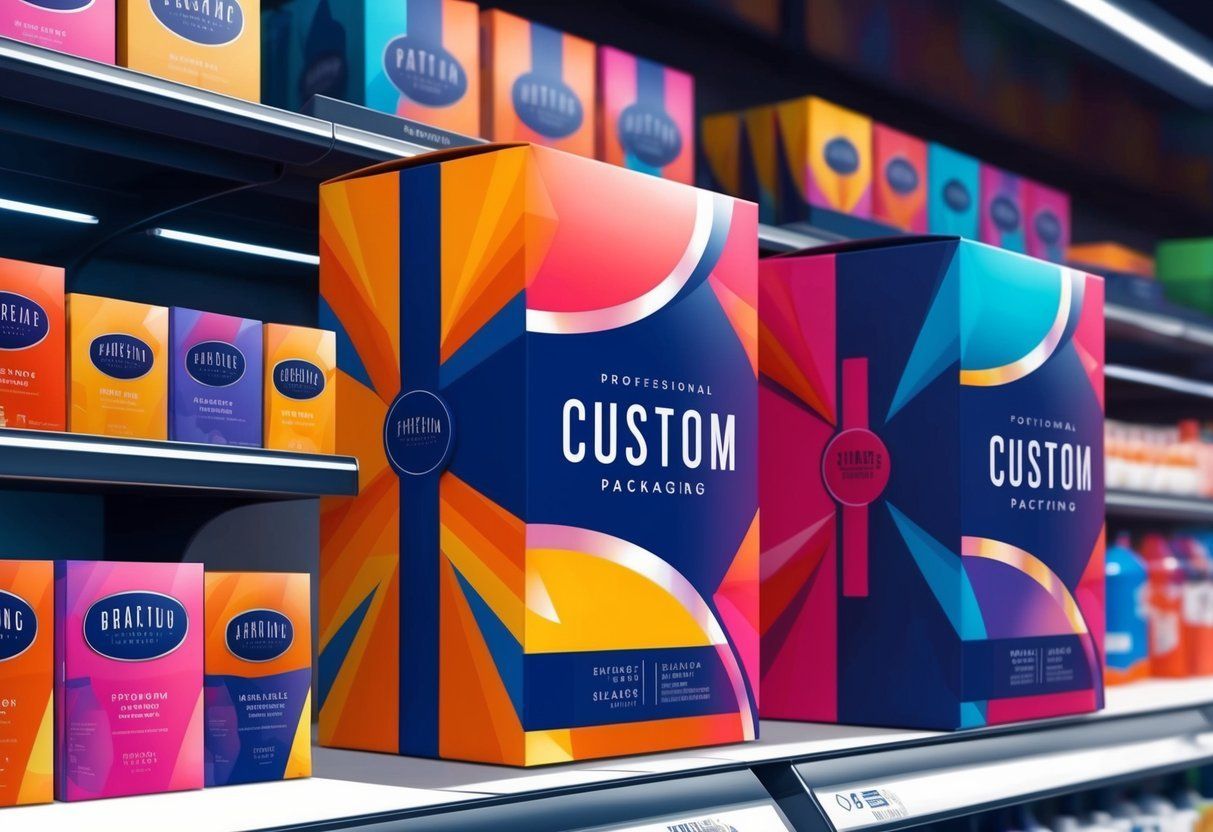
Custom packaging plays a crucial role in supporting a brand’s marketing strategy. It ensures brand consistency by aligning visual elements like logos and colors in all marketing materials.
Innovations in packaging can enhance online shopping experiences and help differentiate brands.
Packaging as Part of the Marketing Mix
Packaging should integrate seamlessly with the marketing mix. It’s not just a container; it’s a promotional tool.
Colors, materials, and logos used in packaging should mirror business cards and brochures. This consistency strengthens brand recognition.
Marketers should view packaging as an extension of their communication tools. It can speak volumes about the brand and its values. When done effectively, it contributes to a cohesive marketing strategy, leaving a lasting impression on consumers.
Marketing Materials and Brand Consistency
Maintaining consistent visual identity across all marketing materials is vital. Packaging should reflect the same look and feel as other brand assets.
Bold colors on packages can match those on italic brochures and business cards, creating a unified brand image.
Consistency helps in building trust. When consumers see uniformity in design, they recognize and feel comfortable with the brand.
Companies need to ensure their printed materials align with their packaging to reinforce recognition and reliability.
Innovative Packaging and Online Shopping
With the rise of online shopping, packaging innovation is critical. Creative packaging can enhance the online unboxing experience.
The use of unique shapes, opening mechanisms, or eco-friendly materials can set a brand apart in a crowded digital space.
Effective packaging for online shopping should focus on protection during transit while maintaining aesthetic appeal. This balance helps in keeping products safe while providing a memorable unboxing experience, which can lead to repeat purchases and brand loyalty.
Cost Efficiency and Packaging Needs
Custom packaging can boost a brand’s image while keeping costs in check. By carefully balancing packaging quality with budget considerations, companies can improve perceived value and drive customer satisfaction.
Collaborating with packaging experts often uncovers additional savings and enhances design choices.
Balancing Budget and Packaging Quality
Finding the right balance between cost and quality is crucial. Brands need to analyze their budget to determine how much they can afford to spend on packaging without sacrificing quality.
High-quality packaging increases perceived value, which can attract more customers. Economical materials, such as recycled or sustainable options, may help reduce costs while maintaining an appealing look.
Visual appeal shouldn’t be sacrificed while staying on budget. Choices include:
- Simple yet elegant designs
- Minimalist graphics
- Subtle colors
These choices often keep production costs down but still look professional. Consider bulk buying or long-term agreements with suppliers, which can lower expenses further.
Packaging Experts and Cost Savings
Consulting packaging experts can reveal new ways to save money. They offer insights into choosing materials and designs that align with brand identity while being cost-effective.
Experts are familiar with packaging trends and can suggest alternatives that maintain function and appearance.
They help identify unnecessary expenses and streamline processes. For example, using standardized sizes may reduce waste and shipping costs. Packaging experts also evaluate the packaging vs. product ratio, ensuring that no space or material is wasted.
Expert guidance often leads to significant improvements in both brand image and budget management. Input from seasoned professionals transforms ideas into market-ready products efficiently.
Regulatory Compliance and Packaging
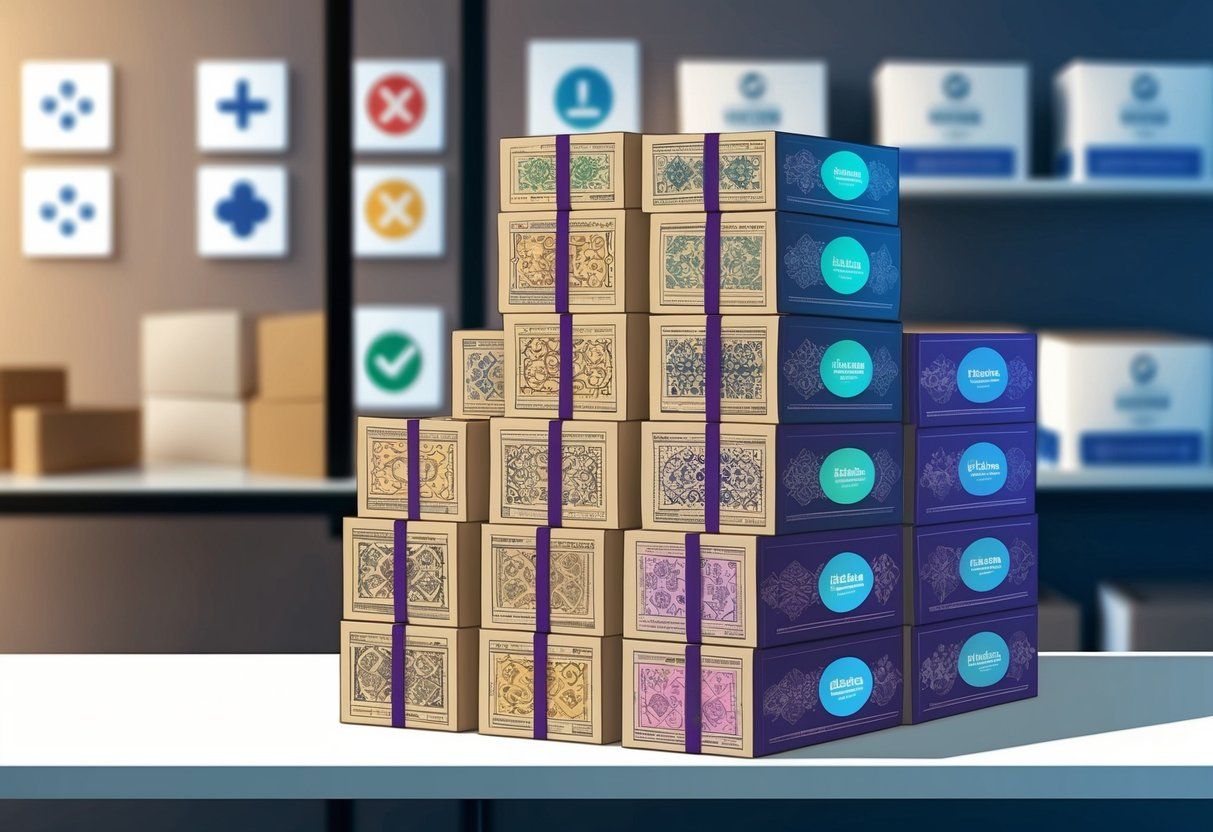
Ensuring that packaging meets legal standards is crucial for brand trust and product safety. Companies must follow packaging laws and maintain high safety standards to protect consumers.
Understanding Packaging Laws and Standards
Packaging laws vary by region and product type. Businesses must keep up with changes to avoid penalties.
Common regulations include labeling requirements, material restrictions, and recycling mandates.
For example, the EU and U.S. have strict rules on what materials can be used. Labels must clearly show ingredients, weights, and manufacturer details. Different industries have specialized standards, like those for food and pharmaceuticals. Following these guidelines helps protect the environment and eases market access.
The Role of Packaging in Product Safety
Packaging plays a vital role in preventing contamination and damage. Proper seals, durable materials, and clear instructions keep products safe.
Specific designs can protect delicate items like electronics and medications from damage during transport.
For food items, packaging should be tamper-evident to ensure freshness and safety. Safety testing is vital to confirm that packages can withstand potential hazards. A minor error in packaging can lead to product recalls, damaging the brand’s image. Following safety protocols is essential for consumer trust.
Frequently Asked Questions
Custom packaging can give products a unique look and feel, impacting consumer perception. Design choices reflect a brand’s story and contribute to building loyalty, with innovative trends pushing the boundaries of what’s possible.
What are the key advantages of investing in custom packaging for a product?
Custom packaging helps products stand out on the shelf. It can also reflect the brand’s values and appeal to the target audience. Additionally, it offers protection during shipping, reducing the risk of damage.
In what ways can packaging design influence consumer perception of a brand?
Packaging design impacts how customers view a brand. High-quality materials and appealing visuals can create a sense of luxury. Clear branding helps consumers recognize and remember the brand.
How can thoughtful packaging contribute to a brand’s storytelling and identity?
Thoughtful packaging can communicate brand stories through colors, images, and text. It helps tell the brand’s history or mission. The materials and design choices can align with the brand’s identity, making it memorable.
What considerations should businesses have when designing packaging to enhance brand image?
Businesses should ensure packaging aligns with their brand values and target market. They need to consider sustainability, aesthetics, and functionality. The design must be practical yet attractive, highlighting the brand’s strengths.
How can businesses measure the impact of their packaging design on brand recognition and loyalty?
Businesses can use customer feedback to gauge design impact. Sales data and repeat purchases are also indicators. Surveys and market research help in understanding customer perceptions and satisfaction.
What are the innovative trends in custom packaging that brands should be aware of?
Eco-friendly materials are gaining importance.
Interactive packaging, such as QR codes, enhances consumer engagement.
Minimalist designs and bold colors are also trending, offering fresh ways to capture consumer interest.…
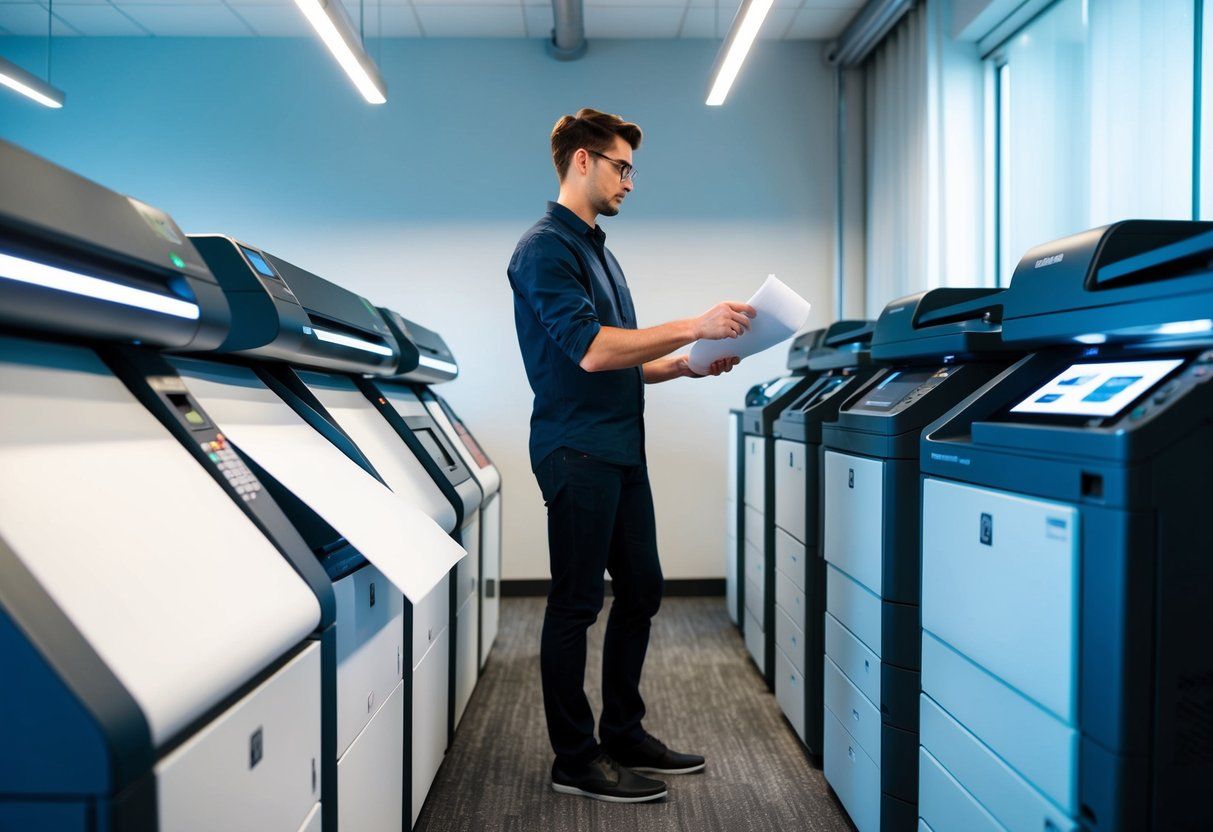
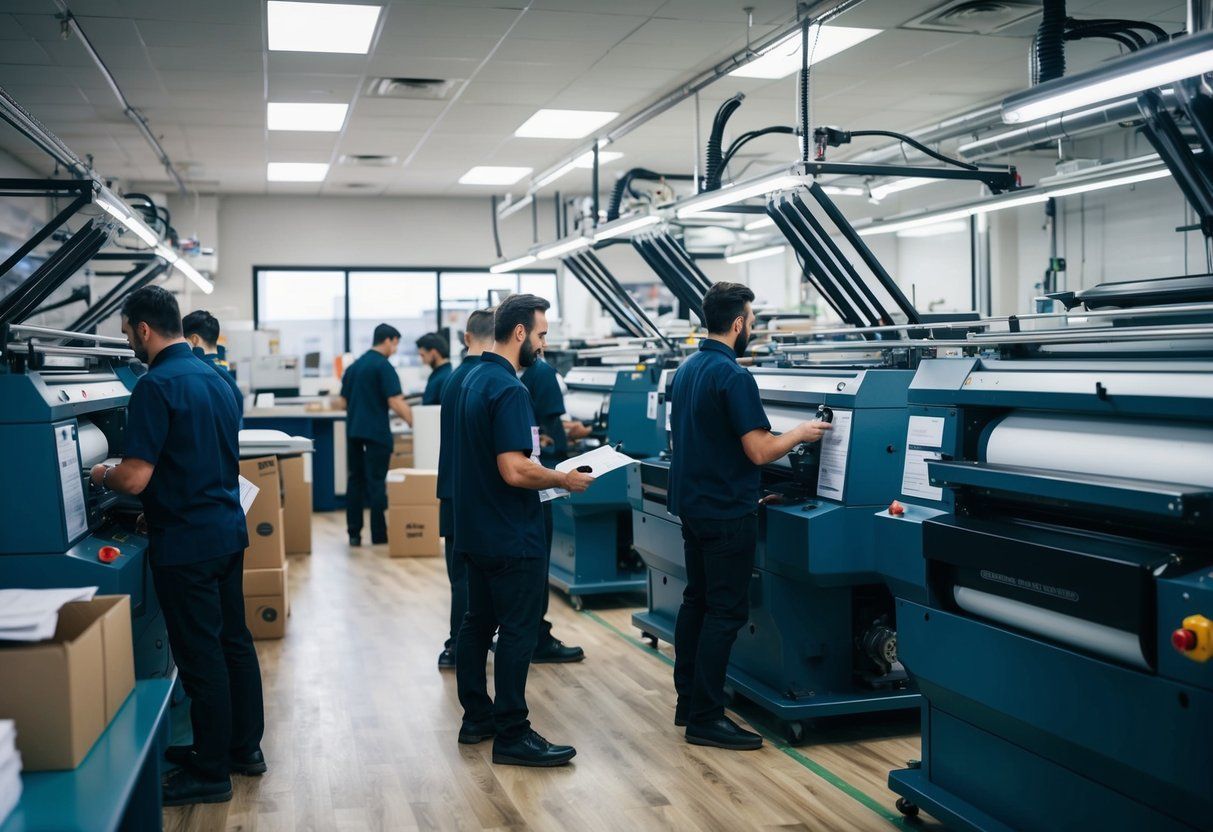
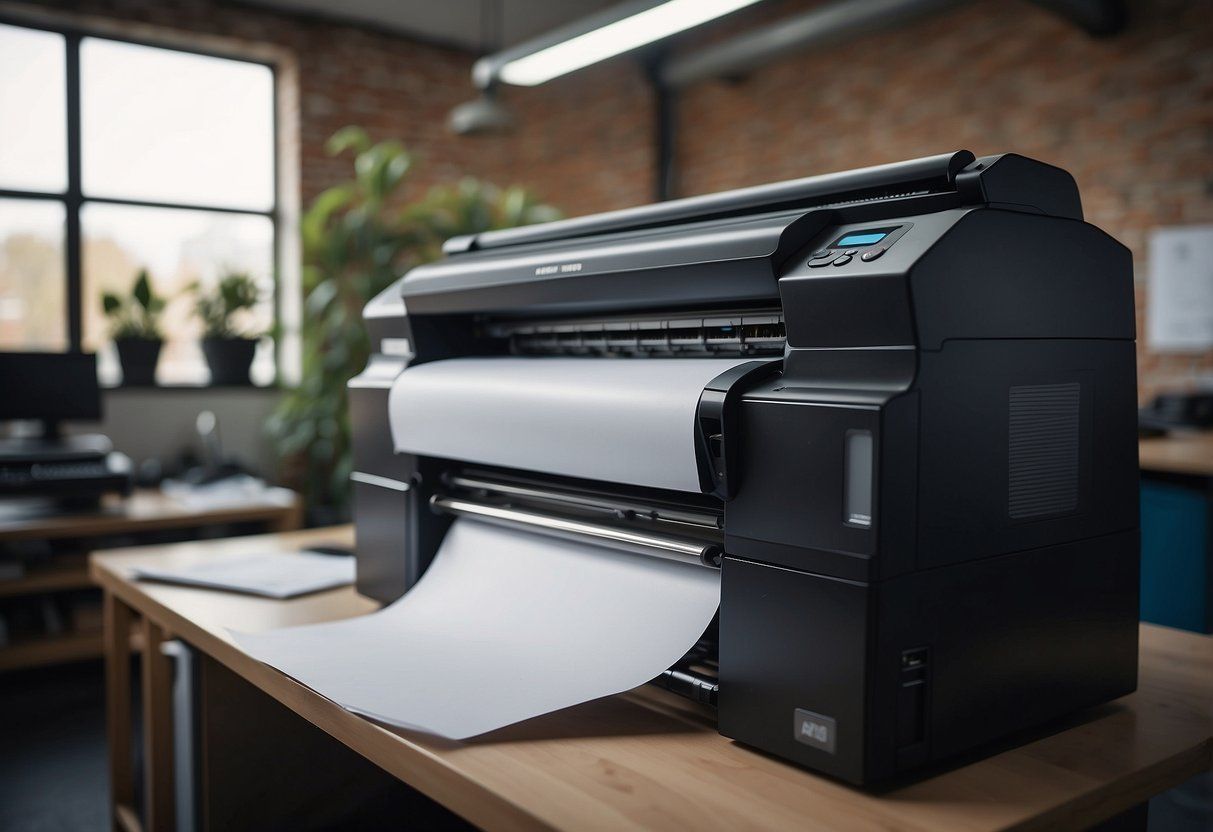
Ready to get started?
Call Main Graphics at 949-788-6100 For Your Free Consultation With A Printing Expert!
Get A Free Quote
All Rights Reserved | Main Graphics


